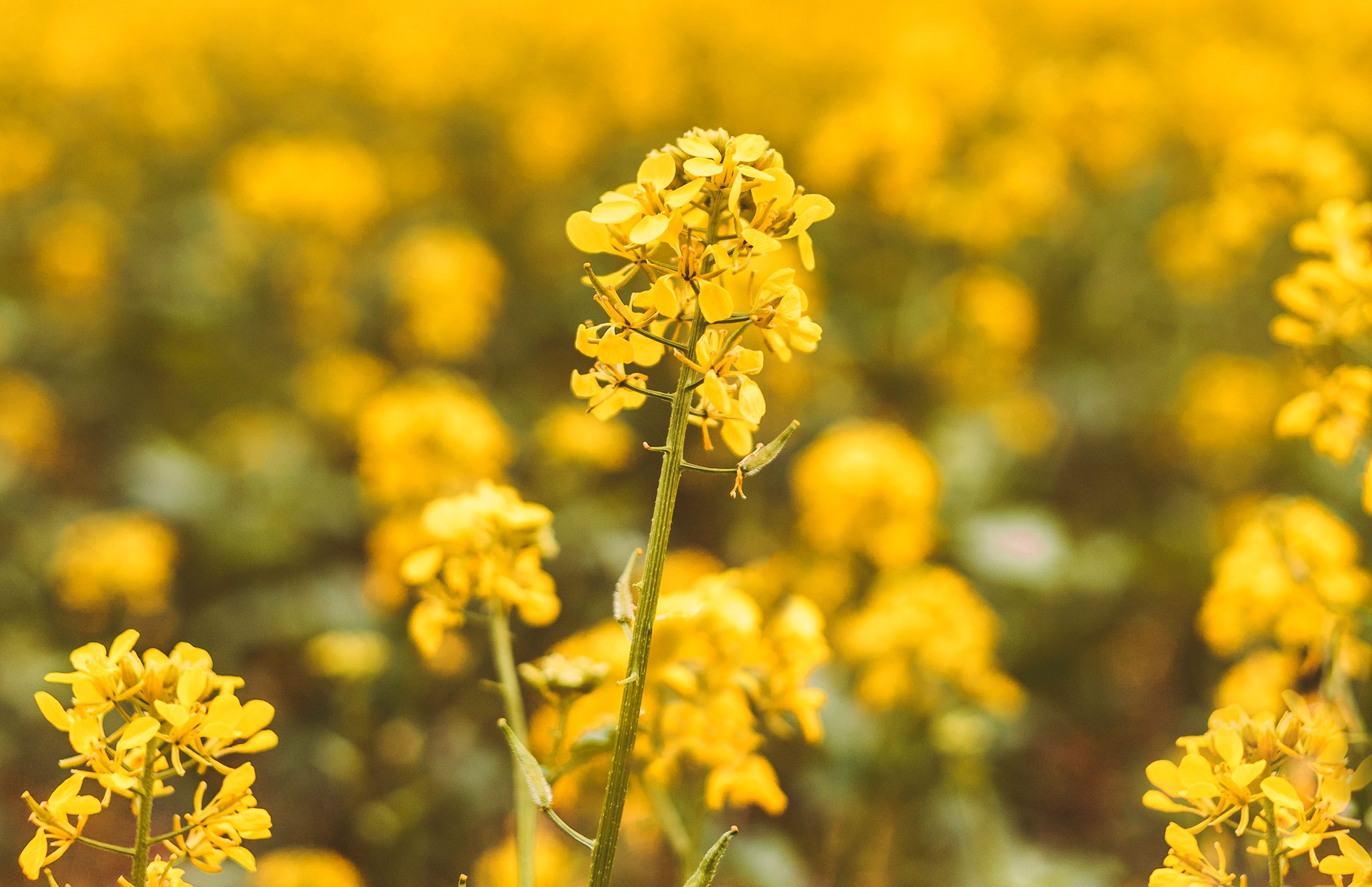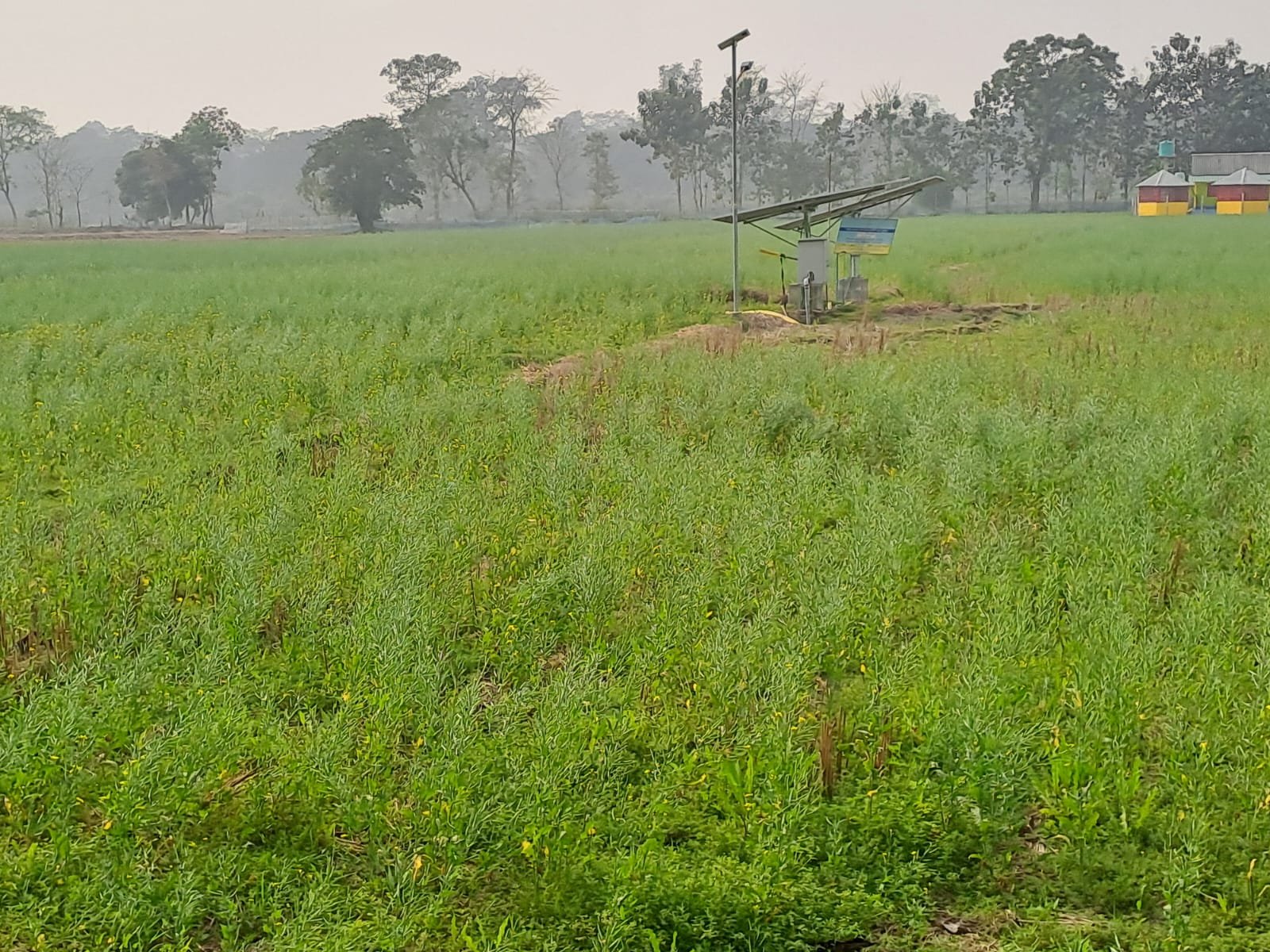
Zero-tillage mustard systems
Plot level diversification
Overview
The chosen pathway for plot-level diversification in the Unnishbisha area, specifically in the villages of Bhogmara and Ruidanga Dritiyo Khanda, focuses on optimizing the cropping sequence by introducing zero-tillage (ZT) mustard between preceding and succeeding rice crops. Initially, the region followed a traditional rice-rice cropping sequence, with mustard patches only sporadically present. Mustard cultivation offers the potential to utilize more fallow land, providing a cost-effective alternative to potato cultivation with lower investment requirements. Many farmers leave their fields fallow after paddy cultivation or reserve them for boro paddy, making such fields ideal for mustard cultivation. Local farmers already have experience with mustard farming, although current production levels in the villages are relatively low, ranging from 50-70 kg per bigha. Targeting farmers who leave land fallow during the rabi season presents a viable opportunity for increasing mustard production. Early planting is essential to minimize issues with mustard aphids. The lower investment required for mustard farming may make it particularly attractive to smallholder farmers, encouraging them to adopt it over other crops.
Who is working in the Pathway
The key partners involved in the pathway include Satmile Satish Club o Pathagar (SSCOP), Uttar Banga Krishi Vishwavidyalaya (UBKV), Farmer Producer Companies (FPCs), the International Maize and Wheat Improvement Center (CIMMYT), local farmers, the Department of Agriculture (DoA), Krishi Vigyan Kendra (KVK), and farmers with limited access to capital. These partners collectively contribute expertise, resources, and support to optimize the cropping sequence and promote mustard cultivation in the region.
Activities
The planned activities planned for this pathway include
Selection of Suitable Land: Identifying appropriate land for conducting on-farm trials.
On-Farm Trials: Implementing trials to test soil quality and suitability for mustard cultivation.
Variety Identification: Identifying short-duration varieties or leveraging adaptive trials of BARC-developed mutant varieties.
Cluster Demonstrations: Organizing cluster demonstrations to showcase ZT mustard cultivation practices.
Cultivation Practices: Applying suitable cultivation techniques such as Resource Conservation Technologies (RCT), surface seeding, and relay cropping.
Trial Monitoring: Regularly monitoring the trial farms to assess performance.
Post-Intervention Survey: Conducting surveys with both trial and non-trial farmers to assess the impact of interventions.
Awareness Campaigns: Organizing continuous farmer meetings, awareness campaigns, and demonstrations, supported by subsidized inputs and machinery for demonstration purposes.
Cultivation Protocol: Distributing established cultivation protocols (distribution done once in 2024) and organizing field visits, banner displays, short videos, and media coverage.
National Flagship Program Linkage: Connecting the pathway with national programs to reduce costs for farmers.
Exposure Visits: Facilitating exposure visits for farmers to learn from successful practices.
Training Programs: Providing training on the paddy-mustard-paddy production system, as well as need-based training for women farmers.
Field Days: Organizing field days to demonstrate the effectiveness of mustard cultivation.
Government Scheme Linkage: Collaborating with government schemes (TRFA -Targeting Rice Fallow Areas) to minimize production costs, particularly with ATMA officials.
Partnership Network: Leveraging the network of partner organizations and government entities to streamline the pathway.
Low Cost System: Promoting the low overall cost of the paddy-mustard-paddy production system, with reduced input costs for seeds, irrigation, and plant protection.
Processing Units: Facilitating access to small mustard processing units for self-consumption, with government schemes available for establishing these units for small farmer groups.
Crop Insurance: Encouraging farmers to utilize available crop insurance, such as Bangla Shasya Bima (BSM).
Results – Achievements and Learnings
In the first year (2023-2024), several key activities were successfully implemented, including field days for both paddy and mustard crops, which fostered hands-on learning and knowledge sharing among farmers. Banners were placed in 12 farmers' fields to increase visibility and awareness about the project. Continuous awareness campaigns and demonstrations, along with regular farmer meetings and monitoring, ensured active engagement and support for the new practices. Additionally, subsidized inputs and machinery were provided to reduce financial barriers and encourage participation.
Key learnings from the first year include the importance of consistent farmer engagement, the effectiveness of visible promotional tools like field banners, and the critical role of subsidized resources in encouraging the adoption of new cropping practices. Another key learning is the realization by partner organizations of the need to intervene, even if minimally, in both the preceding and succeeding rice paddy cycles. It was considered important to incorporate mustard without disrupting the two rice crops, and introducing higher-yielding, short-duration rice varieties was seen as a way to achieve better, risk-free results.

Case Study Report
Zero-tillage Rapeseed/Mustard
Farm Household Livelihood Diversification: Trade-offs & Synergies

